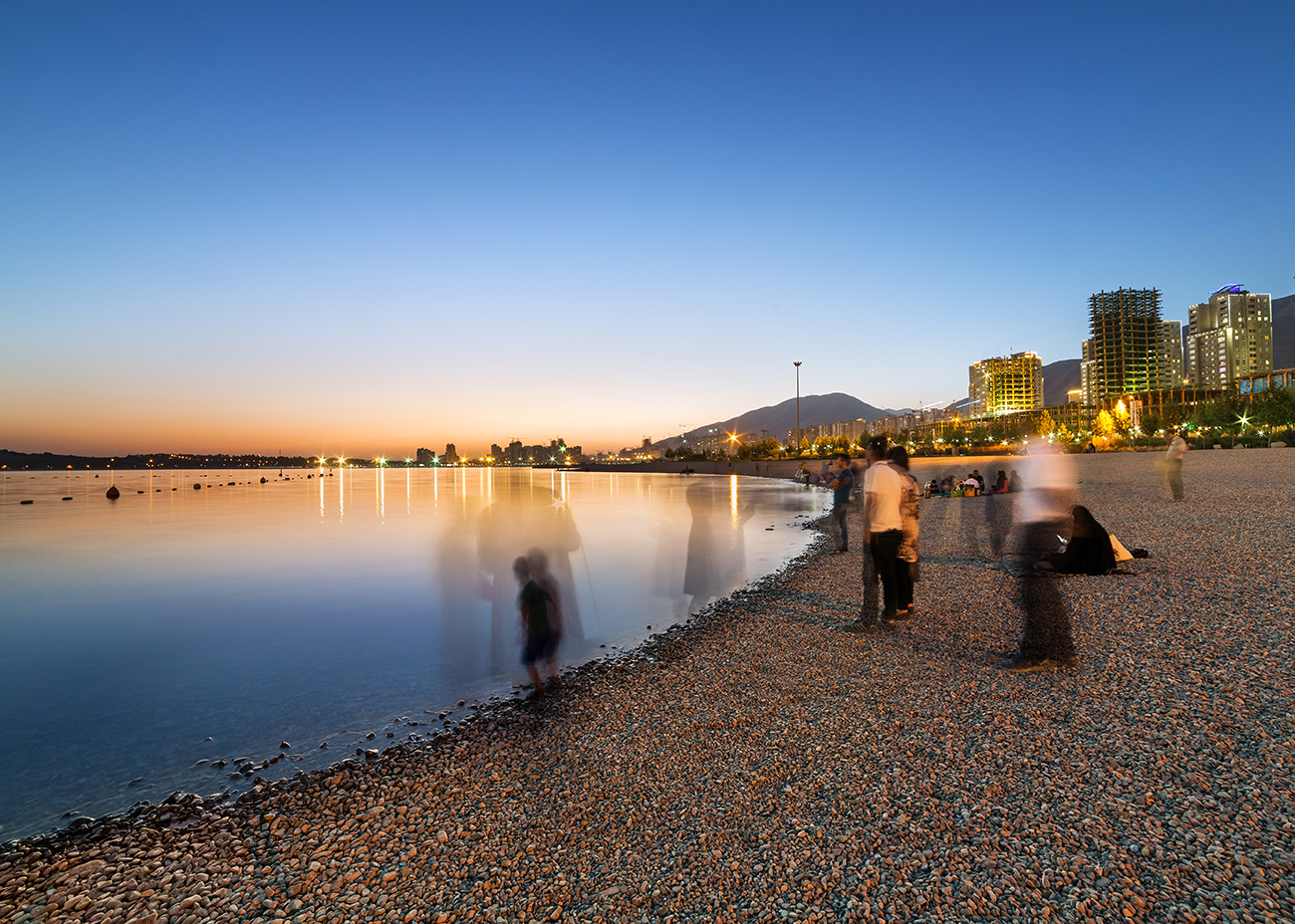Project Statement
The lakeshore landscape design of Chitgar Lake is a new model of urban public parks in Iran, different from most previous projects in the country. It is based on natural materials and green infrastructures. It was one of the largest and most challenging landscape projects in Iran. The adjacency of the newly-built dense urban fabric with no particular identity on one side and the lake and Chitgar Forest on the other, make the narrow lakeshore landscape an intermediary open space between the metropolitan mass and nature. The landscape architects created a livable and multifunction place from an ecological standpoint answering the main challenges of the project: protecting the lake’s man-made structure, protecting and enhancing biodiversity, managing storm waters, Revitalization of hydrologic processes, and providing a welcoming and safe place for citizens for recreation and environmental educations.
Location, scope, and size
Chitgar lakeshore landscape design covers 65 hectares of land surrounding the man-made lake, located within the 22nd district of Tehran municipality, Tehran, Iran. Chitgar Lake is an artificial water body in an area of 134 hectares, located in the southern hillsides of the Alborz Mountain Range.
The site consists of a linear belt of land with the width varying from 25 to 150 meters around Chitgar Lake. The design phase of the project began in 2010 and construction was concluded after four years. Chitgar Lake Park is now one of the largest urban spaces of Tehran metropolis.
Concepts
The main design concept is creating spaces by ‘not doing architecture’ and “building the nature with nature”; all traces of the architect’s interventions should also be hidden behind nature and life processes. In line with the main concept, the space is formed by two elements: (1) Nature: natural materials such as water, earth, vegetation, and rocks are used to create space. Various ecological processes such as change of seasons, marine life, and migratory species are readily accessible to visitors in an eco-revelatory design. (2) Interaction by citizens as a space-forming force: creating ‘unlabeled’ spaces so that all persons could define space according to their personal needs and perception, and space which accommodates diverse activities and interactions. The infrastructures, drainage, and detailing reflect the same concept; their impact on nature is minimized, as well.
The design incorporates a playful gesture of land making, introducing human-made earth mounds, resulting in a constant change of sightlines towards surrounding sceneries, motivating visitors to travel through the landscape in order to discover desired views (and spaces) scattered all around the park. The peculiar characteristics of moving through the natural settings of the lake landscape define a network of paths, which accommodates both pedestrian routes and bike lanes.
Materials and installation
The international sanctions against Iran since 2011-2014 imposed a major decrease in construction budgets, and a large landscape project like this was in real danger of cancellation. On the other hand, the considerable distance from urban infrastructures such as electricity and piped water made it very hard for using tools for cutting stones and concrete became an expensive material. Landscape architects turned the problem into an opportunity by using raw materials. Stones, sand, and gravel, came directly from the mine to the project and were used with minimum alteration. Dry stone and gabion walls were applied as retaining walls, which made the flow of underground stormwater between different levels easy. These strategies enhance neutrality and permeability without any major dispute arising between the designers and the client and consultants. The paved areas were made from modular tiles of local granite stones.
























